
Dried peas, beans and lentils are among the few natural sources of durable, long-lasting high-quality protein. That's earned them a central role in vegetarian cookery, as well as many of the world's rural cuisines. Lentils and split peas simmer relatively quickly, even without advance preparation. But whole dried peas -- like beans -- require a longer cooking time. That's especially so with peas that have seen long storage, though a pinch of baking soda can soften them more quickly.
A Slow Pulse
All but the thinnest of peas and beans -- collectively known as "pulses" -- are relatively slow to cook. That's because they're seeds, intended to overwinter in the earth before sprouting, and the primary function of their leathery skins is to slow the absorption of moisture. Beans are commonly soaked before cooking, to permeate the outer skin with water and speed the cooking process. That same technique works with whole green and yellow peas, or tawny chickpeas.
A Bad Seed
Still, at times peas might remain stubbornly firm even after long cooking. There are two common causes for this problem. Occasionally peas or beans suffer from adverse growing conditions, usually heat and drought as the seeds are ripening. Their skins become unusually thick and leathery, preventing water absorption, and the peas themselves remain smaller and denser than usual. Peas can also become hard in storage, if temperatures and humidity are high, as molecular changes strengthen bonds in the peas' cell walls and coat the absorbent starches with proteins. The net result is peas that cook very slowly, at best. Baking soda can help soften these stubborn peas, and also has an effect on their less-troublesome kin.
The Effect of Soda
A small amount of baking soda can make the cooking water mildly alkaline, which sharply alters the way legumes cook. The alkaline water, and free sodium from the baking soda, act powerfully to weaken the substances -- hemicelluloses -- that act as a glue to hold the peas' cell walls together. This weakens the peas' skins and speeds the absorption of water, and also helps soften bonds in the peas' starchy interior. Their texture once cooked can be slightly grainy, rather than the ideal creamy texture, but they're at least edible. The downside, especially with ordinary dried peas, is that they can become overly soft and mushy. The soda can also leave an unpleasantly soapy, chemical flavor on the peas.
A Better Option
An alternative technique gives canny cooks the advantages of soda, while minimizing the disadvantages. Rather than adding the soda to the cooking water, add it to the peas' soaking water instead. This serves the same purpose at the molecular level, weakening chemical bonds and speeding cooking, but allows an opportunity to rinse away the soda before you cook your peas. This helps hard peas cook in a reasonable time, and ordinary peas can be brought to a soft texture more quickly for purees and soups.
Fresh Peas
Cooks occasionally opt to add a pinch of baking soda to fresh peas as well, a piece of old-time lore that's seldom seen in modern cookbooks. With fresh peas, the soda's primary purpose is to protect the easily damaged chlorophyll that gives them their color. Chlorophyll breaks down quickly in hot water, because its molecules are chemically active and quickly bond with the water's hydrogen atoms. Baking soda reduces the volume of free hydrogen atoms, preserving the chlorophyll's fresh green color. Unfortunately it can also leave the peas disconcertingly mushy, and soda also aggravates the nutrient loss that occurs during boiling.
Related Articles

Beans Vs. Lentils
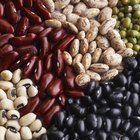
How to Cook Purple Hull Peas in the ...
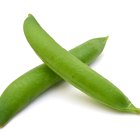
The Difference Between Dried Peas and ...

Time Required to Cook Beans in a Crock ...

What if You Don't Cook Chickpeas Long ...

How to Soften Beans After Cooking

The Best Way to Cook Dry Beans
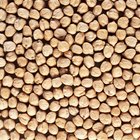
How to Cook With Chickpeas
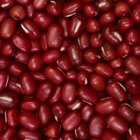
How to Soak Adzuki Beans

How to Dehydrate Peas

Do You Need to Soak Lentils Before ...
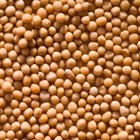
How to Cook Lentils and Split Peas

How to Cook Red String Beans

How to Cook Romano Beans

The Flammability of Fabric Softeners

Should You Steam or Blanch Bean Sprouts ...

How to Make Hominy With Baking Soda

How to Rehydrate Chickpeas

How to Blanch Okra
Do I Need to Cook Snow Peas Before ...
References
- On Food and Cooking; The Science and Lore of the Kitchen; Harold McGee
- Best Cooking Pulses: Tips for Cooking With Dried Peas
Writer Bio
Fred Decker is a trained chef and certified food-safety trainer. Decker wrote for the Saint John, New Brunswick Telegraph-Journal, and has been published in Canada's Hospitality and Foodservice magazine. He's held positions selling computers, insurance and mutual funds, and was educated at Memorial University of Newfoundland and the Northern Alberta Institute of Technology.
Photo Credits
Hemera Technologies/AbleStock.com/Getty Images